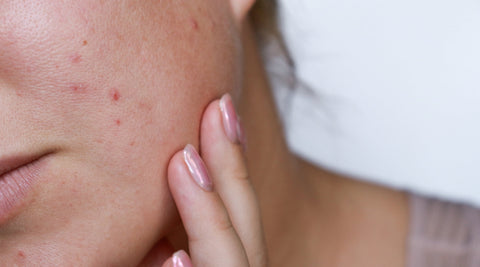When you hear the word “tan,” what comes to mind? A golden holiday glow? A stubborn patch of dullness on your arms? Or the lingering reminder of that weekend wedding where you forgot sunscreen?
The idea of a “tan” has gone through a fascinating evolution, from accident to aspiration, and now, back to caution. Let’s dig into where tanning came from, what it really means for your skin, and how science can help.
A Short History of Tanning
Before the 1920s, pale skin was prized as a sign of wealth, proof that you didn’t have to toil outdoors. But the story changed dramatically thanks to one woman: Coco Chanel.
In 1923, Chanel returned from a yacht trip on the French Riviera with sunburned skin. Photos of her bronzed look spread quickly, and just like that, tanning became fashionable. A tan was suddenly a symbol of luxury, leisure, and modern style. By the mid-20th century, lying on the beach with baby oil was practically a rite of passage.
What We Know Now: A Tan Is Damage
Fast-forward to today, and dermatologists will tell you a very different story. That golden-brown tan isn’t a healthy glow at all, it’s your body’s SOS response to DNA damage.
Here’s what’s happening under the surface:
-
UV rays penetrate the skin, causing oxidative stress and DNA mutations.
-
Your body ramps up melanin production (the pigment in skin) to shield deeper layers from further injury.
-
The result? Darkening of the skin i.e., a “tan.”
In other words: a tan isn’t proof your skin is thriving in the sun. It’s evidence that your skin has been stressed, and while melanin helps protect you, it’s not foolproof. Repeated tanning = long-term risks like pigmentation, premature ageing, and skin cancer.
Can Supplements Like Pearl Tomato Help?
This is where nutritional science offers support. Pearl Tomato extract, rich in colorless carotenoids (phytoene and phytofluene), works from the inside out to:
-
Absorb UV radiation before it causes as much harm.
-
Reduce oxidative stress triggered by sun exposure.
-
Moderate melanin production, leading to less darkening over time.
-
Support recovery, so skin can return closer to its baseline tone after incidental tanning.
Think of it as building a “UV buffer”, an extra layer of defense to help skin stay even-toned.
Sun Protection Still Comes First
As powerful as carotenoids are, they work best as part of a broader sun-protection strategy. That means:
-
Daily broad-spectrum sunscreen (SPF 30+).
-
Protective clothing and hats if you’ll be outdoors.
-
Shade-seeking habits, especially midday.
The Bottom Line
Tanning may have started as a fashion accident nearly a century ago, but today we know better: it’s not a beauty trend, it’s a biological stress signal.
The good news? You don’t need to choose between enjoying the outdoors and protecting your skin. Smart prevention (sunscreen, shade) plus science-backed support (like carotenoid-rich supplements) can help you keep your skin even, healthy, and radiant, without the baggage of sun damage.
References
-
Segrave K. Sunlight, Skincare and Fashion: The History of Tanning. McFarland, 2005.
-
Diffey BL. Tanning and human skin. Photochem Photobiol Sci. 2002;1(6):406–412.
-
Grether-Beck S, et al. Phytoene and phytofluene in human skin: photoprotective carotenoids. J Nutr. 2017;147(11):1979–1986.
-
Tominaga K, et al. Protective effect of carotenoids from white tomato extract on skin against UV-induced erythema. Skin Pharmacol Physiol. 2012;25(5):263–269.



